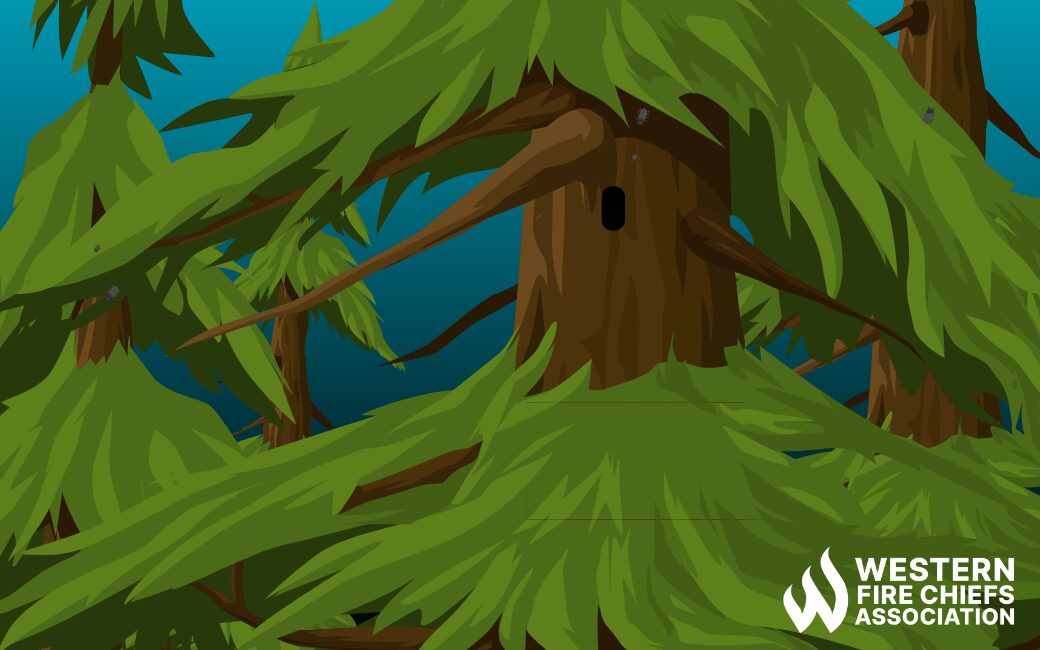Fire Pit Safety Tips
Stay safe around the campfire with tips from the Western Fire Chiefs Association. Learn essential precautions and practices for a worry-free outdoor campfire.
Discover the hidden connection: bark beetles and wildfires. Explores how these insects can fuel and influence the severity of forest fires with guidance from the WFCA.
Published:December 5, 2023
Edited:March 1, 2024

Discover the hidden connection: bark beetles and wildfires. Explores how these insects can fuel and influence the severity of forest fires with guidance from the WFCA.
Bark Beetles are becoming a growing threat, particularly concerning wildfires. As the world’s climate changes, these little beetles are emerging as key players in the frequency and intensity of wildfires. This article explores the link between bark beetles and wildfires by digging into how these insects contribute to the initiation and spreading of such fires.
Bark beetles are insects that inhabit cone-bearing evergreen trees, such as pine. These beetles infest the trees and live beneath the bark. They typically infest trees that are already weakened by other agents or factors such as drought, infestation by other insects, or high stand density.1
There are over 600 species in the United States and Canada with around 200 in the State of California alone. Most species of bark beetle are dark red, brown, or black in color and shaped like a pill. The larvae of a bark beetle, however, is an off-white and may resemble a grub. These beetles, which can live for one to two years, include prominent species like the mountain pine beetle, engraver beetles, the red turpentine beetle, and the western pine beetle. These species are infesting pines in urban landscapes and at the wildland-urban interface in California. Different species of bark beetles attack and infest different types of trees.2
Bark beetles produce pheromones, known as aggregating attractants, which target trees and can even result in the collective demise of tree groups. Additionally, these insects carry staining fungi and decay fungi. Staining fungi helps reduce tree defenses and makes the host tree’s composition more suitable for developing larvae. Decay fungi, as the name suggests, begin the recycling process of dead wood.1 Each tree declines at a different pace once infected by the bark beetles, depending on how weakened the tree was before the beetles made their homes in it. Some trees slowly fade in color from green to brown, while others die within a few weeks with very little change in coloring. Some trees can even be infested for years before dying. Unfortunately, once a tree has been infected by the beetles, it is likely too late to save it.3
To avoid an infestation of bark beetles, it is suggested that weak and infested trees are removed, deep watering for your trees is provided, and preventative spraying of uninfected trees and anti-aggregation pheromones are utilized.1
In the aftermath of the 2020 wildfires, scientists delved into the factors that contributed to the unprecedented devastation of the wildfire season. They found that climate change brought on hotter and drier conditions, allowing for vegetation to burn easily. Additionally, decades of fire suppression have allowed fuel to accumulate in forests.4 Temperature plays a crucial role in the life processes of bark beetles, it can influence factors like larval development and the ability to withstand cold conditions. The connection between temperatures and a bark beetle’s physiology directly affects their population growth. Higher temperatures lead to better survival rates and faster development.
Bark beetles bring about the death of their host trees through mass attacks, a coordinated effort requiring synchronized emergence of adult beetles. The timing of this emergence is influenced by specific temperature-related thresholds in both development and diapause, which is a dormant phase marked by reduced respiration. Because temperature strongly affects population growth and limited rainfall can cause stress to the host trees, scientists can determine that changes in temperature and rainfall due to climate change could impact bark beetle populations in the future. This influence could result in population increases, depending on the kind of beetles and where the forests are located.5
Stay safe around the campfire with tips from the Western Fire Chiefs Association. Learn essential precautions and practices for a worry-free outdoor campfire.
Discover essential firework safety tips to ensure a dazzling display without accidents. Learn how to celebrate responsibly with expert guidance from WFCA.
Explore the role of AI in wildfire prediction with guidance from the WFCA. Learn how advanced algorithms and data analytics enhance early detection and response.